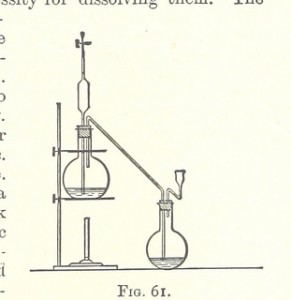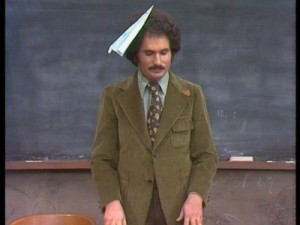The conclusion of fall semester is near, and it will soon be time to submit final grades. What final grades are supposed to mean (and what they communicate) remains contested. We hear about grade inflation and wonder how we could be the one to ding a student’s GPA. They all have 4.0s, right? And yet, it seems unfair to tell a student who made essential, substantial contributions to the course that most of her classmates got similar grades. Are grades rewards, motivators, signals of our great power over undergraduates, traces of a regime of certainty long since fallen? One thing we do know is that they are our responsibility.
soon be time to submit final grades. What final grades are supposed to mean (and what they communicate) remains contested. We hear about grade inflation and wonder how we could be the one to ding a student’s GPA. They all have 4.0s, right? And yet, it seems unfair to tell a student who made essential, substantial contributions to the course that most of her classmates got similar grades. Are grades rewards, motivators, signals of our great power over undergraduates, traces of a regime of certainty long since fallen? One thing we do know is that they are our responsibility.
The questions about and problems with grading have been a rather continuous point of discussion in the FYW Program. After all our talk of “radical equality” and student contribution, are we still, after all, using variations of sticks, carrots, pedestals, smiley faces, and ribbons to mark “success”? Now is not the time to rethink one’s entire grading scheme or overhaul one’s principles of fairness. And existential crises about “marking” students can wait until 2015. But even the most experienced instructors reflect on the work of the semester with some uncertainty about what choices to make in assigning grades.
Some Factors to Consider
Values. The FYW Program communicates values for the courses, but often in mercurial or oblique ways (throughlines, anyone?). Some consistent language nevertheless bubbles up. The Framework for Success in Postsecondary Writing, which was cited in several syllabi this semester, emphasizes curiosity, openness, engagement, creativity, persistence, responsibility, flexibility, and metacognition. Language from past assessments within FYW give us these priorities: inquiry, defined project, textual engagement, and rhetorical knowledge (among other things). Even the throughlines suggest that contribution and emergent complexity are highly valued. In assessing students’ work in your course, consider reading through these lenses. What terms best convey the priorities of your course? Do you make reference to these when you establish final grades?
What you’ve communicated. You have been talking and writing to students all semester. One thing to review at semester’s end is your own discourse about success in this course. What have you emphasized and encouraged? If your language is wholly different than the above values, you might need to consider revising your communications with students in future semesters. But you should stick to what you’ve explicitly asked of students.
What seems fair and consistent. Even the most meticulous recorder of student work and progress will sometimes see inconsistencies between students in assessing grades. That is, one may see that the numbers add up to a simple B for one student, but, when looking at other B grades, notice a gap between performances. If you’ve provided detailed information about points and percentages, you’d best stick to these guidelines. Nonetheless, most calculations leave room for some interpretation. Assign the grade that you feel best reflects the student’s performance in the course, giving some attention to how other students achieved a similar grade. Don’t let a faulty grading system trump your gut, if your gut is informed by fourteen weeks of reading and innumerable points of contact with your students.* Likewise, each section of FYW is a partner to other sections offered throughout the UConn-iverse. If your grades are especially high (a majority of students receiving As) or low (most at C-level or below), you should look into why that is. You cannot be expected to know what happens in other sections, and you may indeed have an anomalous group of students. But the FYW directors and assistant directors can provide feedback and context for program-wide grade trends.
Non-passing students should not pass the course. A tautology, perhaps, but one that bears repeating. There are many reasons why a student may not pass your course, and you have presumably communicated with the student about this possibility at an earlier date (midterm grades, an end comment suggesting that the student is at risk of failing, or a November email to a disappearing student). I usually tell students that everyone has a bad semester at some point (because it’s largely true), and I remind them that retaking the course will remove the F from their GPA. Nevertheless, some instructors find it very difficult to follow through in assigning a failing grade. It’s an understandable reservation. But don’t assemble some dubious points and extra credits to help a student cross the threshold if he is not turning in passing essays. Please, bring borderline cases to the FYW Office.
As with all things FYW, please come by our offices or send an email if you would like some dialogue or feedback regarding grades. We can provide program-sanctioned backbone, and we can provide a second opinion when you’re feeling unsure about a grade.
*Scott’s perhaps tiresome postscript on the false consolation of positivism goes here: grading schemes that rely on numerical weights and measures are no less “subjective” than those devised and articulated with prose alone.
Image found here.

 soon be time to submit final grades. What final grades are supposed to mean (and what they communicate) remains contested. We hear about grade inflation and wonder how we could be the one to ding a student’s GPA. They all have 4.0s, right? And yet, it seems unfair to tell a student who made essential, substantial contributions to the course that most of her classmates got similar grades. Are grades rewards, motivators, signals of our great power over undergraduates, traces of a regime of certainty long since fallen? One thing we do know is that they are our responsibility.
soon be time to submit final grades. What final grades are supposed to mean (and what they communicate) remains contested. We hear about grade inflation and wonder how we could be the one to ding a student’s GPA. They all have 4.0s, right? And yet, it seems unfair to tell a student who made essential, substantial contributions to the course that most of her classmates got similar grades. Are grades rewards, motivators, signals of our great power over undergraduates, traces of a regime of certainty long since fallen? One thing we do know is that they are our responsibility.


